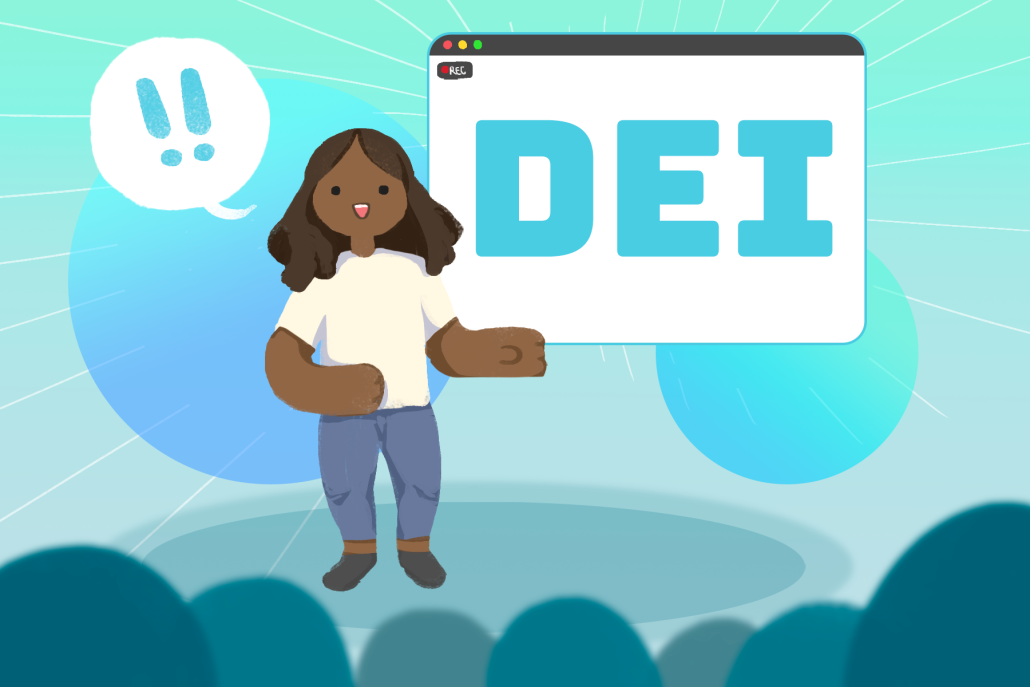Advocacy liaisons provide platform for marginalized voices

When George Floyd and Breonna Taylor were killed by police in the summer of 2020, Ezi Ogbuli, the community chair of the Black Student Assembly at the time, teamed up with her intern, Tyler Trouillot, to launch an initiative receiving feedback from Black students about the Department of Public Safety’s treatment.
The anecdotes were disturbing accounts of harsh encounters with the campus’s police.
“Even though [students are] dressed in full USC gear and are on campus, they get stopped and asked like, ‘What are you doing here?’ or ‘Show us your I.D.,” Ogbuli said.
That experience led Ogbuli, a senior majoring in global studies, to add advocacy to her responsibilities of creating unity for Black students. It was this that created the foundation for her role as advocacy liaison for BSA and Undergraduate Student Government.
Advocacy liaisons essentially serve as the “middle person” between cultural assemblies, which are organizations that serve the interests of different identities at USC and USG. They serve as representatives for assemblies such as the Black Student Assembly, the Latinx Student Assembly and the Queer Student and Ally Assembly.
Kavita Rai, USG’s current chief diversity officer, created the positions of advocacy liaisons last Fall, to create engaging and inclusive discussions between USG and the student body.
“The goal was to really ensure that everything felt much more interconnected, and DEI wasn’t a separate committee, but it was integrated into everything we did within the legislative department,” Rai said.
Kevyn Calleja, a sophomore majoring in business administration and accounting, is another one of those representatives. He works as a mediator between USG and IDEAS — Improving Dreams, Education, Access, and Success — to bring forth change for undocumented students on campus.
Calleja first started as a director of membership for IDEAS in Spring 2021. Once appointed as advocacy liaison in the Fall, he saw how USG helped bolster IDEAS’ membership solely by marketing general body meetings through social media and at legislative branch meetings.
Calleja said that he saw 15 new faces at one of his meetings after USG helped promote their events, including their general body meeting where they wrote letters to migrants in detention centers.
The student government also helped connect advocacy liaisons to USC faculty and administration, Ogblui said.
“It increases the chance of getting an email reply and getting someone to actually sit down and meet with you, or to have a conversation with you because they understand the greater stakes,” Ogbuli said.
It’s this easily facilitated connection to faculty members that Calleja also appreciates. USG can create legitimacy for cultural assemblies’ projects, convincing faculty members to step in and contribute through their “official” reputation.
“Sometimes, assemblies don’t have the connection to faculty,” Calleja said. “They have this connection to students through general body meetings and stuff, but if they want to perform a project to carry that out, sometimes it’s hard to find the faculty.”
For Calleja, USG’s ties to faculty and administration have made it easier to push forward cultural projects, such as a DEI training run in collaboration with Scholarships A-Z, an undocumented youth intiative based in Tuscon, Ariz.
“I work with that advocacy liaison to organize the UndocuAlly Training,” said Rai about her partnership with Calleja. “Having the input of IDEAS directly involved in a project that USG is working on and involves that specific community has been really helpful, and it’s been something that, obviously, brings really important perspectives.”
“It’s just a great team effort to provide better perspectives, a better community within USG. And then, of course, that transfers on to the greater student body.”
Kevyn Calleja, USG Advocacy liaison
By introducing these often unheard perspectives, Calleja said that he believes USG can serve the greater student population.
“It’s just a great team effort to provide better perspectives, a better community within USG. And then, of course, that transfers on to the greater student body,” Calleja added.
Ogbuli prioritizes the effort to insert the perspectives of marginalized communities through her various collaborative projects that touch on issues concerning Black students and students of color.
“How I’ve kind of approached the role then is to be more involved in what USG is doing,” Ogbuli said. “Instead of telling them what BSA’s doing and then they offer support, I’m going to committee meetings … raising awareness about different issues that are going on on campus.”
Through this partnership, Ogbuli has worked with the External Affairs committee chair, Sydney Brown, to work on issues such as DPS’s budget transparency and the hiring process for the new DPS chief.
In those steps towards advocating for Black students, Ogbuli has confronted some frustrations along the way, including navigating a middle ground between the interests of BSA and USG’s lengthy bureaucratic process. As an advocacy liaison, she’s wanted to push more radical changes to DPS and their policing strategies but feels often stunted by USG’s extensive protocols and regulations that prolong projects and make reforms, but not large structural change.
“I’m there to offer support to things I feel like are going to be helpful or we’re going to actually, you know, push the needle forward,” Ogbuli said. “I can’t say that’s all the projects. But you know that again, there’s red tape, so you can only do it as much as you can.”
It’s this balance that Calleja has also had to figure out after transitioning into the role. He recalls how IDEAS has pushed for the Undocumented Trojan Resource Center, a hub for undocumented students, since 2018.
“When I started working with USG, [they said], ‘OK, you gotta take a step back and see what you’ve already been given,’” Calleja said. “For the UTRC, I had to take a step back on trying to push that forward and first [focus on] establishing smaller projects. And once we have those projects established, once we maximize the resources, we can really push for bigger.”
Liaisons tackle the balancing act of pushing their projects but also using the advantage of their collaborative relationship with USG, such as having a team backing them up to propel their projects forward so they aren’t the sole people advocating for their communities.
“Being able to have some more manpower, have some more resources is definitely helpful, and it takes the weight off your shoulder,” Ogbuli said.

